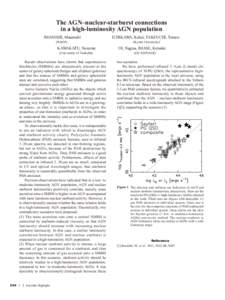<--- Back to Details
| First Page | Document Content | |
|---|---|---|
 Date: 2012-07-25 04:23:18Star Galaxy Seyfert galaxy Space Radio astronomy Starburst galaxies Stellar astronomy Active galactic nucleus Astronomy |
Add to Reading List |
| First Page | Document Content | |
|---|---|---|
 Date: 2012-07-25 04:23:18Star Galaxy Seyfert galaxy Space Radio astronomy Starburst galaxies Stellar astronomy Active galactic nucleus Astronomy |
Add to Reading List |